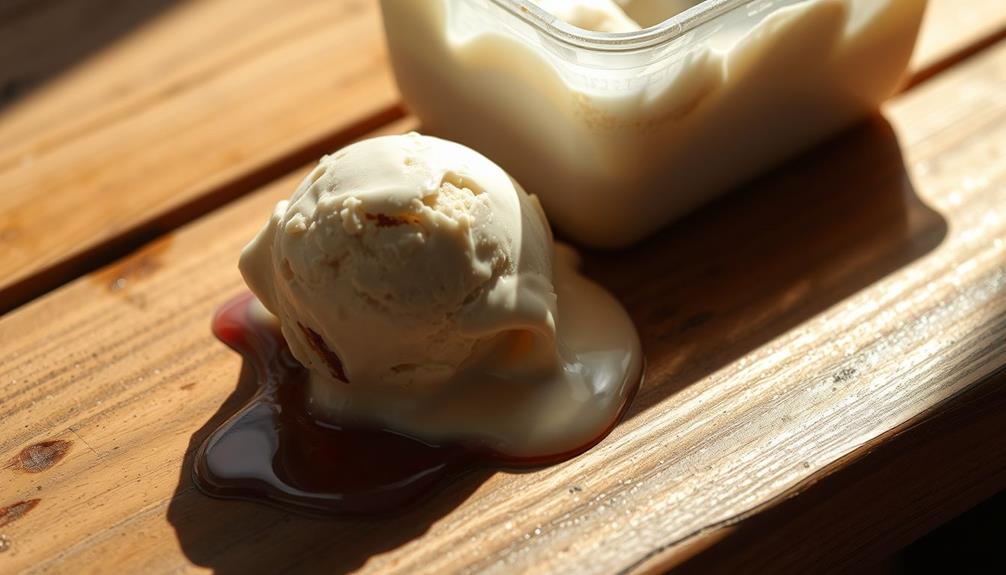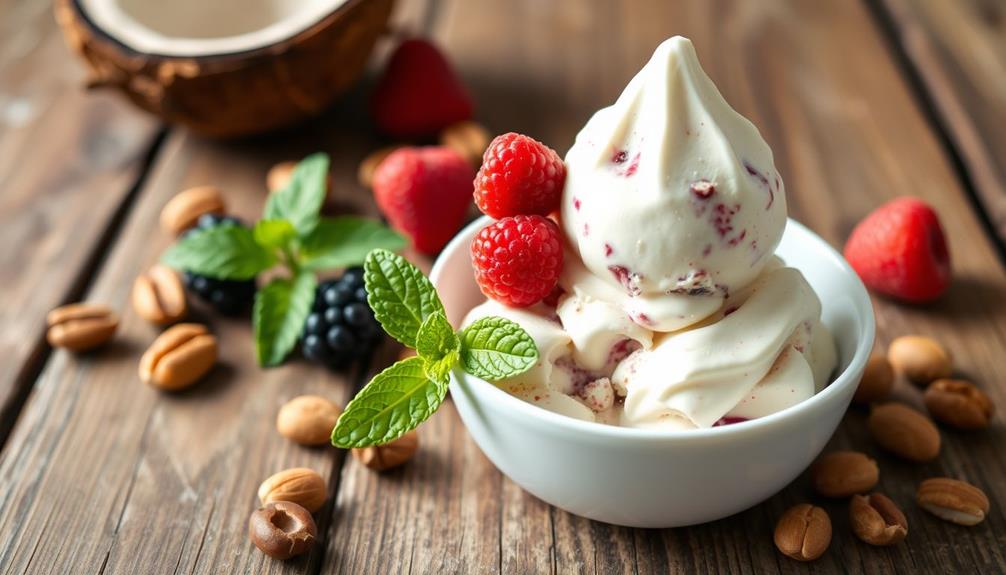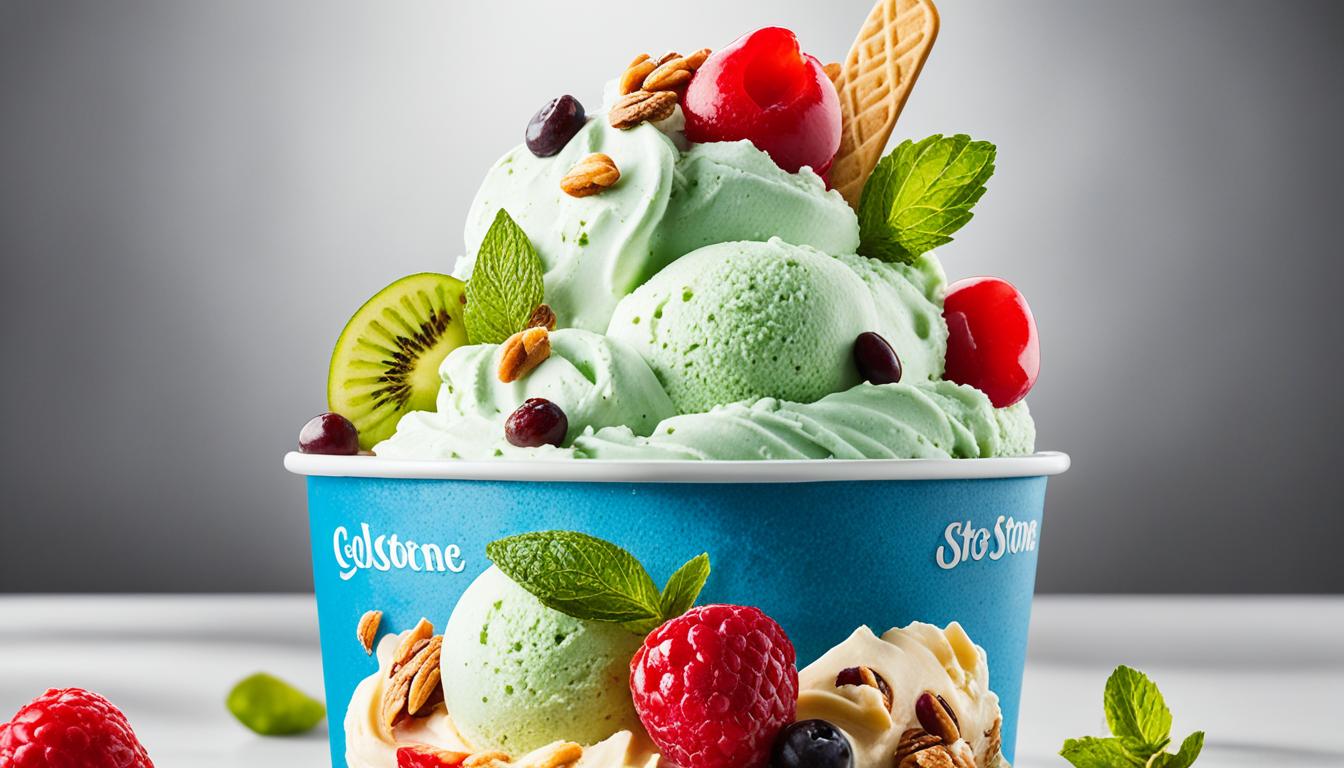As a loving cat owner, you may find it hard to resist the temptation to share a little indulgence with your furry friend. After all, the joy of sharing dietary treats is a universal expression of love, isn’t it? However, what may seem like a harmless moment of fun could actually raise serious concerns for your beloved pet’s health. When considering the question, “is ice cream bad for cats?” it becomes essential to understand the potential harmful effects of ice cream on cats. Knowing the risks is vital for nurturing a happy, healthy feline companion.
Veterinarians consistently warn that ice cream is not suited for cats. The high fat and sugar content can contribute to obesity and other health problems, while many cats are lactose intolerant, making ice cream a recipe for digestive upset. In this article, we’ll explore the various facets of ice cream danger for cats, providing insights that can help you make informed choices for your four-legged family member. And it’s not just cats that should avoid ice cream. Veterinarians also caution against feeding ice cream to dogs, as it can lead to similar health issues such as obesity and digestive upset. Just like with cats, many dogs are also lactose intolerant, making ice cream a potentially harmful treat for our canine companions. It’s important to carefully consider the potential risks before treating our pets to any kind of human food, including ice cream and dogs.
Key Takeaways
- Ice cream’s high fat, sugar, and calorie content can exceed a cat’s daily requirements.
- Cats lack digestive enzymes to handle lactose, leading to potential upset stomachs.
- Treats should only make up 10-15% of a cat’s daily calorie intake to avoid obesity.
- Some ice cream flavors contain toxic ingredients like chocolate that are dangerous for cats.
- Xylitol, found in sugar-free ice creams, can pose life-threatening risks to cats.
- Quality commercial cat treats are healthier alternatives compared to human ice cream.
- Monitor your cat after any indulgence to catch digestive issues early and consult a vet if needed.
Understanding Feline Nutrition
Understanding your cat’s nutrition is essential for promoting optimal cat health and ice cream is not part of that equation. Cats are obligate carnivores, which means their diet must be rich in animal-based proteins to meet their specific dietary needs. With many pet food options available, it’s crucial to select those that align with their natural eating habits.
Veterinarians increasingly recommend canned food over dry kibble. This approach addresses several concerns, including the high carbohydrate load typical of dry cat food which can lead to various health problems. Additionally, dry food often contains more plant-based proteins compared to animal proteins, which are inadequate for a cat’s dietary requirements. The processing methods used for dry food may also diminish important nutrients.
Without a diet high in animal proteins, cats may face severe nutritional deficiencies, particularly a lack of taurine, an essential amino acid found in meat. This deficiency can lead to serious health issues such as kidney disease, diabetes, and obesity. You should be aware that most adult cats develop lactose intolerance as they mature, making traditional dairy products unsuitable for their diets.
Instead of offering treats like ice cream which provide little nutritional value, focus on providing a balanced diet rich in meat-based proteins. This will keep your feline friend healthy, energetic, and free from digestive issues. Don’t forget to keep fresh water available at all times to avoid dehydration.

Why Cats Should Avoid Ice Cream
You may be tempted to share a scoop of ice cream with your feline friend, but there are substantial risks of feeding ice cream to cats. Ice cream is rich in sugar and fat—components that do not belong in a cat’s dietary needs. Over 60% of cats in the United States are categorized as overweight or obese, so indulging in high-calorie treats like ice cream can exacerbate these issues.
While cats can safely consume up to two teaspoons of ice cream occasionally, excessive intake can cause serious problems. Many commercial ice creams contain propylene glycol, a substance to which cats are particularly sensitive. Symptoms can range from upset stomach and diarrhea to more severe reactions, including vomiting and increased heart rate. Chocolate ice cream poses an even greater risk, potentially leading to life-threatening conditions.

Most cats older than six to eight months are lactose intolerant, meaning that milk and the lactose found in ice cream can result in digestive distress. This could manifest as diarrhea, flatulence, and abdominal pain. Certain ice creams also contain high levels of sodium and cholesterol, leading to food poisoning symptoms such as incoordination and seizures.
Instead of treating your cat to ice cream, consider healthier, species-appropriate snacks. While some special frozen treats designed for cats mimic the creamy texture of ice cream, they are formulated to minimize health risks. Always prioritize a balanced diet to support your cat’s well-being, avoiding options like ice cream altogether unless it’s a rare indulgence.
| Content | Per 100 grams |
|---|---|
| Fat | 11 grams |
| Protein | 3.5 grams |
| Carbohydrates (including sugar) | 24 grams |
| Cholesterol | 44 milligrams |
| Sodium | 80 milligrams |
| Calories | 207 |
Is Ice Cream Bad for Cats?
Feeding ice cream to your feline friend may seem like a fun treat, yet it comes with significant risks. Understanding the potential hazards of ice cream ingredients is essential for keeping your cat healthy. Ice cream contains dairy, which can lead to ice cream toxicity in cats, particularly due to their high lactose content. Most cats lose the ability to digest lactose properly as they mature, leading to various digestive issues in cats.
The Risks of Ice Cream Ingredients
The primary concern regarding ice cream revolves around the dairy it contains. High lactose levels in traditional ice cream can result in gastrointestinal disturbances such as:
- Vomiting
- Excessive retching
- Regurgitation
- Diarrhea
- Bloating
- Flatulence
- Constipation
- Irritable bowel syndrome (IBS)
Increased calorie intake from high-fat content can also lead to obesity and other health problems. If you decide to treat your cat with ice cream, ensure that it is an occasional indulgence. Limiting it to a maximum of one tablespoon at a time is advisable. For the average cat, ice cream should only be given once a month, making it a rare, enjoyable treat.
Common Symptoms of Digestive Issues
When a cat consumes ice cream, they may experience several unpleasant symptoms. Signs of digestive distress to watch for include:
- Vomiting
- Lethargy
- Loss of appetite
- Diarrhea
- Increased thirst
If you notice any of these symptoms after your cat consumes ice cream, seek veterinary advice. Understanding ice cream toxicity in cats is crucial for making informed choices about their diet and overall well-being.

The Impact of Dairy on Cat Health
Understanding the dairy effects on cats is essential for every cat owner. Many adult cats lack the enzyme lactase, which is required to digest lactose found in dairy products. This lactose intolerance means that consuming cats and ice cream can lead to significant health issues, particularly gastrointestinal disturbances.
Lactose Intolerance in Cats
Most adult cats cannot properly digest milk, leading to various symptoms after consumption. While kittens rely on milk in their early weeks, their digestive systems develop and usually can handle lactose up to six months of age. Cats that struggle with lactose can experience:
- Vomiting
- Diarrhea
- Abdominal pain
- Gas and bloating
Digestive Upset from Dairy Products
Although some dairy products are more tolerable than others for cats, caution is essential. For instance:
| Dairy Product | Lactose Level | Safety for Cats |
|---|---|---|
| Cow’s Milk | High | Not recommended |
| Cheese | Low | Occasional treat |
| Yogurt | Lower | Better option |
| Butter | Very low | Occasional treat |
While cheese and yogurt may be safer options for some cats, large quantities of any dairy can lead to weight gain and obesity. It’s vital to ensure that dairy comprises no more than 5-10% of their total diet.

High Sugar and Fat Content
Understanding the implications of high sugar content in your cat’s diet is crucial for their health. Cats are not equipped to metabolize sugar efficiently, which places them at risk for various health concerns. Ice cream danger for cats extends beyond the immediate pleasure they may seem to derive from the treat.
How Sugar Affects Cat Health
When cats consume sugary foods, it can lead to significant weight gain and increase the likelihood of developing diabetes. This is particularly concerning for indoor cats, who can be more sedentary. Common symptoms to watch for include:
- Increased thirst
- Frequent urination
- Weight changes
Risk of Obesity and Diabetes
The high fat and sugar content in ice cream further exacerbates the risk of obesity, leading to additional health issues such as heart disease and arthritis. The potential for pancreatitis should not be overlooked, particularly if your cat is not accustomed to high-fat foods. Consider the following comparisons:
| Type of Food | High Sugar Content | Fat Content | Risks |
|---|---|---|---|
| Ice Cream | High | High | Obesity, Diabetes, Pancreatitis |
| Cat Food | Low | Moderate | Balanced Nutrition |
With the potential health risks outlined, it becomes clear that ice cream offers no nutritional benefits for cats. Instead, it is advisable to prioritize their dietary needs with appropriate cat food to maintain a healthy weight and overall well-being.

Toxic Ingredients in Ice Cream
When it comes to ice cream toxicity in cats, certain ingredients can pose significant health threats. While you may enjoy sharing a sweet treat with your furry friend, it’s important to recognize the potential toxins in ice cream that can lead to serious complications.
Chocolate and Its Dangers to Cats
Chocolate is one of the most hazardous ingredients found in various ice cream flavors. It contains theobromine, which can disrupt heart rhythms and potentially lead to severe symptoms like seizures in cats. Even a small quantity can trigger adverse reactions, making it crucial to keep chocolate-flavored products away from your pet.
Other Harmful Additives to Avoid
Aside from chocolate, there are several other harmful ingredients to watch out for in ice cream. For instance, components like xylitol, which is commonly used as a sugar substitute, can result in alarming drops in blood sugar. Nuts, certain spices, and high sugar content can also create health risks, including digestive upset, obesity, and diabetes. With so many potential toxins in ice cream, strict avoidance is advised.

| Ingredient | Health Risk |
|---|---|
| Chocolate | Toxic; can cause seizures and heart issues |
| Xylitol | Can lead to sudden drop in blood sugar |
| Nuts | Potential toxicity; digestive upset |
| High Sugar | Obesity, diabetes, pancreatitis |
What to Do If Your Cat Eats Ice Cream
If your cat accidentally consumes ice cream, it’s essential to remain calm and evaluate the situation promptly. Understanding what to do can mitigate the ice cream danger for cats and prevent a cat health emergency. Start by checking the ingredients list to identify any harmful components.
Immediate Steps to Take
First, determine if the ice cream contains toxic ingredients such as chocolate or xylitol. If these harmful substances are present, contact your veterinarian without delay. Even if the ice cream seems safe, keep an eye on your cat for the next few hours. Signs to watch for include:
- Vomiting
- Diarrhea
- Lethargy
- Loss of appetite
Should any of these symptoms arise, seek veterinary assistance right away. Reacting quickly can make a significant difference in your cat’s recovery.
Signs of Potential Toxicity
It’s crucial to recognize symptoms that may indicate your cat is having a negative reaction. In extreme cases, ingesting an excessive amount of ice cream can lead to serious conditions such as pancreatitis or heart disease due to high-fat content. Be vigilant for any of the following:
- Incoordination
- Seizures
- Pale mucous membranes
- Discolored urine
If you observe any of these signs, your cat may require immediate medical attention. Staying informed and taking proactive measures can help ensure your feline friend remains healthy and safe.

Healthier Treat Alternatives for Cats
When it comes to treating your feline friend, finding healthier alternatives to ice cream can significantly enhance their diet while keeping them happy. Many human foods can be shared safely, providing nutrients and excitement without the drawbacks of sugary or dairy-laden desserts. It’s crucial to select options that align with your cat’s dietary needs, ensuring their health and well-being.
Nutritious Human Foods You Can Share
Consider offering your cat the following cat-friendly food options:
- Cooked meats: Chicken, turkey, and fish (like salmon) can be served plain and without seasonings. Limit portions to around two teaspoons, keeping track of their total daily calorie intake.
- Fruits: Blueberries and watermelon can be great treats in moderation. They offer vitamins and antioxidants beneficial to your cat’s health.
- Vegetables: Carrots and cucumbers are low-calorie snacks that can keep your cat hydrated and satisfied.
- Cooked eggs: Scrambled or boiled eggs can provide protein. Just ensure they are thoroughly cooked to avoid any health risks.
- Oatmeal and rice: These options can serve as occasional fillers, beneficial for digestion.
Commercial Cat Treat Options
For those preferring packaged treats, look for commercial options specifically designed for cats. These treats cater to their nutritional needs while ensuring safety. Popular brands often focus on high-quality ingredients that avoid harmful additives. Just like with human foods, limit these treats to around 10% of your cat’s daily caloric intake to maintain a balanced diet. Always read labels to confirm that they include healthy ingredients and avoid toxic substances.

Do Cats Enjoy Ice Cream?
When it comes to cat food preferences, you might wonder if your feline friend enjoys ice cream. While this treat is beloved by many humans, cats have very different taste receptors. Their inability to perceive sweetness leads to the question: do cats like ice cream? The answer is often no, especially since most cats prefer savory flavors that align with their natural diet.
Feline Taste Preferences
Cats evolved as obligate carnivores, which means their diet should primarily consist of animal protein. Their preference for meaty flavors can often outweigh any temptation for sweet treats like ice cream. Over time, cats have developed specific taste preferences that lean towards high-protein, savory options. Many cats, when presented with a selection of foods, would choose chicken or fish over ice cream any day.
Understanding Cat Behavior Towards Foods
Interestingly, while most cats do not crave sweets, they may be attracted to the texture and fat content of ice cream rather than its flavor. Cats generally not having a sweet tooth may still show curiosity toward human foods, including ice cream. This behavior can confuse cat owners regarding their dietary needs. It’s essential to recognize that persistent feeding of ice cream may lead to nutritional imbalances or even fussy eating habits, making it crucial to prioritize healthy, protein-rich options instead.

Consulting Your Veterinarian
Taking care of your cat’s health goes beyond simply feeding them regularly. Understanding your cat’s dietary needs is essential, which is where vet advice on cat diet becomes invaluable. Cats have unique physiological characteristics that make them sensitive to various substances. This sensitivity necessitates vigilance regarding what they eat and when to consult a vet.
When to Seek Professional Advice
It is crucial to recognize when your cat may require veterinary attention. If you notice any unusual behavior following a meal, such as vomiting, lethargy, or changes in appetite, you should not hesitate to reach out to your vet for guidance. Additionally, if your cat accidentally consumes toxic substances, immediate consultation is needed to ensure their safety and well-being. Being proactive can prevent serious health issues and help you determine what foods are safe for your feline companion.
Importance of Regular Vet Check-ups
Regular veterinary visits play a vital role in maintaining your cat’s health. These check-ups provide an excellent opportunity for your vet to assess your cat’s overall condition, evaluate their diet, and make necessary adjustments. Discussing any dietary concerns at these appointments can lead to tailored vet advice on cat diet, ensuring your furry friend remains healthy and happy. By prioritizing these visits, you promote preventive care, benefiting both you and your beloved pet.

Creating a Balanced Diet for Your Cat
Establishing a balanced diet for cats plays a crucial role in their overall health. Your feline friend requires a combination of proteins, fats, and minimal carbohydrates to thrive. Understanding these dietary needs helps you create meals that support their well-being.
Understanding Your Cat’s Dietary Needs
Cats are obligate carnivores, meaning their bodies are designed to obtain nutrients primarily from animal sources. A balanced diet for cats should include high-quality proteins from meat, fish, or poultry. Fats are also essential for providing energy and supporting skin and coat health. While carbohydrates should be present, they need to come from appropriate sources like vegetables and grains.
Portion Control and Treat Management
Implementing portion control for cats is vital in preventing obesity and related health issues. To ensure your cat maintains a healthy weight, consider the following:
- Follow feeding guidelines on commercial food packaging or consult your veterinarian for recommendations.
- Divide your cat’s daily intake into measured portions to control their food intake.
- Limit treats to no more than 10% of your cat’s total daily calories to prevent overfeeding.
By keeping track of the amount of food and treats your cat consumes, you can promote a healthier lifestyle while meeting their unique dietary requirements.

| Food Group | Examples | Nutritional Benefits |
|---|---|---|
| Proteins | Chicken, Turkey, Fish | Supports healthy muscles, tissues, and overall body function |
| Fats | Fish oil, Chicken fat | Provides energy and promotes healthy skin and coat |
| Carbohydrates | Peas, Carrots, Brown rice | Supplies energy and aids in digestion |
Encouraging Healthy Eating Habits
Creating healthy eating habits for cats requires intentional strategies at feeding time. You can establish a consistent schedule, ensuring that your cat receives proper nutrition throughout the day. It’s important to offer high-quality cat food that meets their specific dietary needs while minimizing the number of treats given. Too many treats can interfere with a cat’s balanced diet. Aim for treats to be no more than 10% of their daily intake.
Strategies for Feeding Time
- Stick to a regular feeding schedule to help your cat understand when to expect meals.
- Provide high-quality, nutritionally complete cat food.
- Limit treats to healthy options and ensure they don’t exceed 10% of daily intake.
- Introduce interactive feeding methods, like food puzzles, to stimulate your cat both mentally and physically.
Importance of Play and Activity
Active cats are healthy, and engaging them in regular play contributes significantly to their overall well-being. Incorporating playtime into your routine not only maintains a healthy weight but also strengthens the bond between you and your feline friend.
- Use toys that encourage your cat to chase, pounce, and engage in physical activity.
- Schedule daily interactive play sessions to keep your cat stimulated.
- Make sure your cat has access to a variety of toys to prevent boredom.

Conclusion
In summation, while you may view ice cream as a tasty indulgence for your feline friend, it’s essential to recognize that this treat doesn’t align with their dietary needs. The question of is ice cream bad for cats is not just a matter of preference; it encompasses considerable health risks and lack of nutritional benefits. Instead of sharing ice cream, consider opting for safe treats for cats that are specifically designed to support their health and well-being.
As caring pet owners, it’s vital to make thoughtful choices regarding what you share with your cat. You can always explore alternatives such as specially formulated cat-friendly ice creams or even safe, human foods that fit within their nutritional framework. Remember, your main goal should be to keep your furry companion happy and healthy, supporting their longevity and quality of life.
Keeping these considerations in mind not only benefits your cat’s health but also enhances your bond with them. Prioritizing what you feed them will ensure they lead a healthier, happier life while enjoying snacks that are both safe and beneficial. Make informed decisions about the treats you offer, steering clear of harmful options like ice cream.










